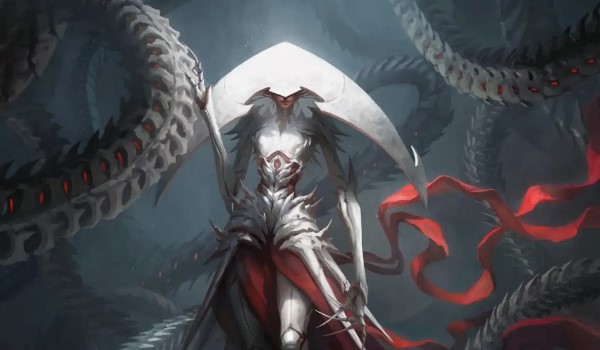Are you a Quiet Speculation member?
If not, now is a perfect time to join up! Our powerful tools, breaking-news analysis, and exclusive Discord channel will make sure you stay up to date and ahead of the curve.
I've had my Arena account for over four years. I've put money into it twice. The first time was the five-dollar Welcome Bundle. The second time was to purchase gems before 2019's GP New Jersey, so I could squeeze in a little extra Ravnica Allegiance Sealed practice. The secret to playing free Magic isn't just collecting trophies. Rather, it's playing Par Magic.
What Is Par Magic?
While our gold supply will increase through Daily Quests, getting four wins (1400 gems) or five wins (1600 gems) represents a break-even point for entering a draft (1500 gems). In my circles, we refer to these parity drafts as playing Par Magic. It's how I grind to Mythic each month, and how we manage to continue playing Arena without investing a cent. It's how we go infinite.
This week, rather than dedicating an article to one specific observation , I wanted to take a broader approach. We'll focus on my most recent decks and the lessons and observations that naturally come from them. This is a new approach for me, and I look forward to hearing feedback on the value it provides or interest it generates.
Red Runs Rampant
In the first deck of our session, I was presented with an interesting pick.
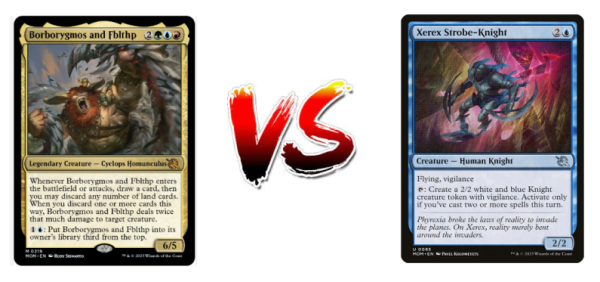
A month ago, I would have leaned into the power. Borborygmos and Fblthp wins games by itself. This reflected the mentality that first defined the format. Instead, I selected Xerex Strobe-Knight. This is still a Prince Format, but we need to approach drafts with discipline if we're going to win consistently.
With the legend, I would have tried to get deep into blue, preferably leaning towards green's natural ability to splash and adding in some other cards worth splashing for. If all things went according to plan, the deck would've been powerful, albeit messy. However, this requires good fixing and cards worth splashing.
These types of high-risk, high-reward lines run antithesis to the concept of Par Magic. That idealized image of a draft would be a strong contender for a trophy. But the odds of a trainwreck are equally realistic. The Knight puts me in the format's deepest color, with particularly powerful uses in both UW Knights and Hopper Aggro. These reflect strong fundamentals that are easy to abandon when we lazily label a format "Prince" and forsake all agency that a given draft offers.
For pick three, I was given an absolute gift: Voldaren Thrillseeker. While red has struggled in the format, this is a card I would gladly snap up first pick. It's a powerful and dynamic tool, and even better than that, it's an enormous sign that red is open. Spoiler alert: it was.
In the draft I bobbed between different Jeskai configurations, but the flow of red cards in pack three made UR an easy choice.
Avoiding Red Is a Mistake
We want to be in the open color. This often remains true even if the color is significantly weaker than other options. This is the case in March of the Machine (MOM) for two major reasons.
First, the format is dense with higher-rarity cards. The Multiverse Legends and Battle slots offer more rares, which can warp the power-level of our draft. If we're the only red drafter, we're going to get all of those. In this draft I got a pack three, pick five Brudiclad, Telchor Engineer into a pick six Rampaging Raptor and a pick eight Khenra Spellspear // Gitaxian Spellstalker. I was willing to splash the Thrillseeker, but with these pickups a more streamlined build became optimal.
Secondly, this format is slow enough to accommodate splashing. If we put feelers into red and identify a few powerful cards, but simply don't see enough powerful red cards, we have outs to splash. I considered this option, but settled on a clean UR deck that used convoke to leverage aggressive threats.
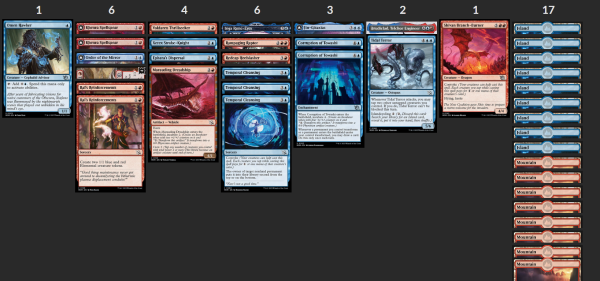
UR Midrange (6-3)
Ultimately, the deck proved a little torn between being aggressive, utilizing convoke synergy pieces, and just playing a bigger gameplan. It had a muddy gameplan offset by high card quality. Still, it was able to get to six wins, with what I think represents a pretty well-navigated par draft.
Between pressuring opponents with a fast start and generating advantage in the late-game with Jin-Gitaxis and Compleation of Towashi, the deck went 6-1 into losing double boss battles, first to a Polukranos Reborn // Polukranos, Engine of Ruin and then to a busted GW counters. Still, that's great Par Magic, baby!
Building Around a Mythic
In the next draft, I opened a P1P1 bomb.
Elesh Norn // Elesh Norn is independently a strong card, but optimizing it requires some deliberate deck building. It's definitely a strong top-end threat in Hopper Aggro, as that deck has a ton of cheap creatures. Additionally, a WB build offers Unseal the Necropolis and Ichor Drinker to fuel and protect this engine. Yes, basically any white deck would make good use of it, but I wanted to draft with optimization in mind. While the 3/5 vigilance is a good body and the static is powerful, especially in aggressive decks, I wanted to "do the thing."
Second pick was more difficult than it looked. While Umori, the Collector was clearly the most powerful option, Ichor Drinker, Unseal the Necropolis, and even Aerial Boost were all closer to what I envisioned for the deck. Still, this early in the draft, it felt like poor judgement to overlook such a clear gap in power. I took the Umori, and remain confident it was the right pick.
Following the pick, I made selections that drove us towards one of those two ideal homes for Elesh Norn // Elesh Norn and ultimately WB seemed to be reasonably open. I was able to secure Unseal the Necropolis, and even got a late Halo Hopper which struck me as an interesting card for the deck, as both white and black have one-drops I wanted to play. Knowing what I know now, I could have leaned towards splashing blue and moved away from some of the aggressive cards. While optimizing Elesh Norn // Elesh Norn makes sense, I think I could have accommodated the Halo Forager and Atris, Oracle of Half-Truths. Chalk it up to overcommitting.
Leaning Aggro, Leaning Midrange
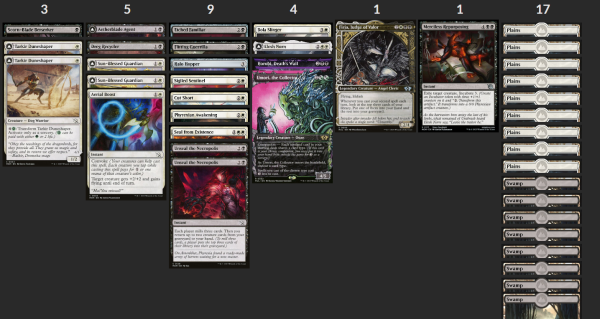
WB Elesh Norn (4-3)
I would argue that it's a bad sign when a deck is running both Aerial Boost and Unseal the Necropolis. They point in two very different directions. Aggressive decks are going to lean towards certain card choices in hopes that more of those cards will be available. More value-driven strategies do the same thing. Here, I found myself caught between what white is trying to do in the format and what black is trying to do in the format. There's not a lot of overlap, and that's why WB is the worst-performing color pair.
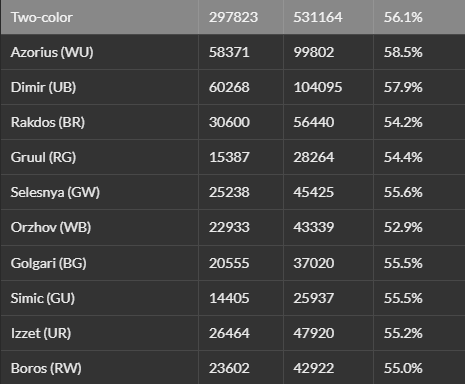
As a result, I tried to make some interesting pieces work. Horobi, Death's Wail turned all of our back-up creatures into Ravenous Chupacabra. The cheap creatures fueled Firja, Judge of Valor, but too often I found myself grinding into a late-game where I was the underdog. Ultimately, the draft didn't come together. Many synergies, while somewhat mismatched, were able to pull me to Par Magic. Plus, when it came to Elesh Norn // Elesh Norn, I definitely got to do the thing, in one game even grinding out an opponent with multiple flips.
Ugh... Gruul
Gruul is easily my least-favorite color pair in the format. It's not the worst, but it's the one I work hardest to avoid. Is there a single interesting green common in the entire set? When paired with Red, you're often just beating down without the upside of the aggression you get in RW. Still, if we're going to play Par Magic, we have to know when it's time to go RG. My feelings made this pick more difficult than it should have been:
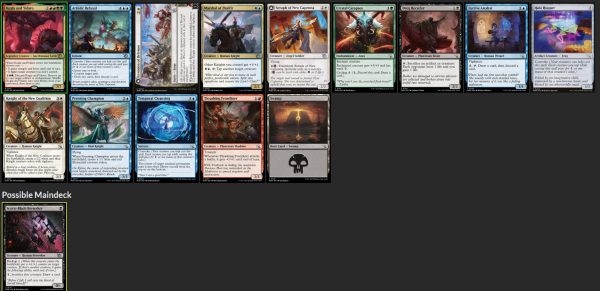
There are definitely some strong blue cards in this pack, but Kogla and Yidaro is completely busted. It's often the most important spell cast in any game. It's a 7/7 that comes with the modality of being a burn spell or a removal spell, or even a Slice in Twain if the situation calls for it. The blue options are nice, but in my opinion wrong.
After the pick, I tried to navigate towards Jund. I hoped that black would let me grind and provide access to removal. I wanted more versatility than RG would offer, but the cards just weren't there.
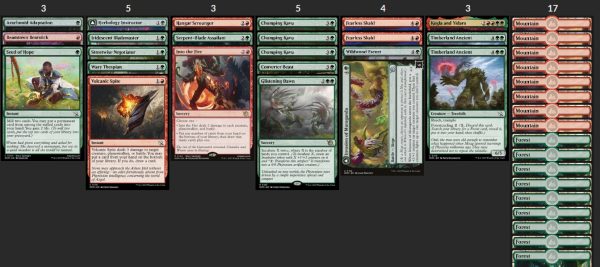
RG Beats (5-3)
I wasn't able to generate a fast enough start to dominate all the matchups. When I fell behind it became very difficult to overcome our opponents' card advantage, except via Kogla and Yidaro. Kogla and Yidaro don't really care about card advantage.
However, in games where I did get ahead, the onslaught of triple Chomping Kavu and double Fearless Skald pressured opponents winningly. Opponents could generate value, but this deck made the game about life totals.
I punted one game because I forgot to Volcanic Spite a Portent Tracker on my turn. As a result, it was able to untap Arixmethes, Slumbering Isle, allowing them to triple spell on turn four. I knew immediately that missing that play would lead to a loss.
While I dislike the colors, they were the natural landing spot for this draft. Sometimes maximizing our wins means taking what the table has to give. In this case it yielded a very powerful RG deck and I got to bully some opponents for wins.
Lessons from Par Magic
We can't always trophy our drafts, and while I would never suggest one should lower their expectations, learning to appreciate our accomplishments is extremely valuable. More pragmatic than that, if we can maintain Par Magic, our drafts will pay for themselves as our rank moves us towards Mythic.
But playing Par Magic demands that we handle the draft with both a plan and flexibility. Once I draft my first card, a plan starts to form. What colors do I want to pair this card with? How committed am I to these visions I'm starting to form? We answer these questions based on data points that flow through the draft. Each choice helps us guide towards the eventual landing point, but also helps us envision our realities with increasing clarity while we disqualify other options. That's how any good drafter approaches deck-building, but if our goal is to consistently achieve high results, we need to make each decision with fidelity.
So until next time, I'll be doing my best to optimize each decision, and continuing to play Par Magic. And hopefully snagging some trophies along the way.


